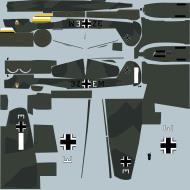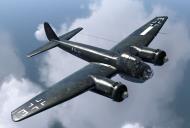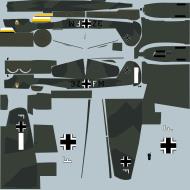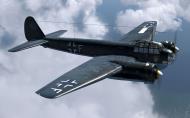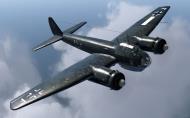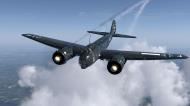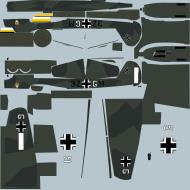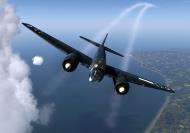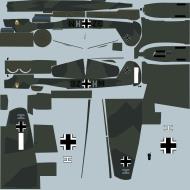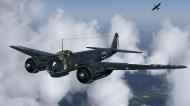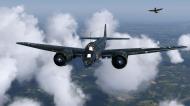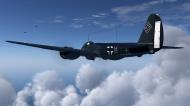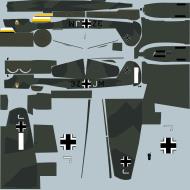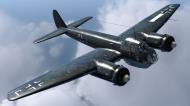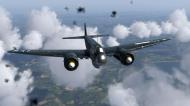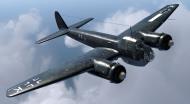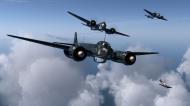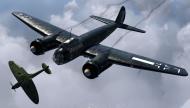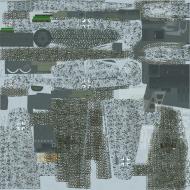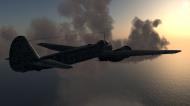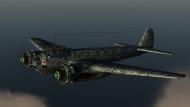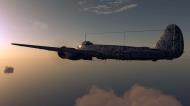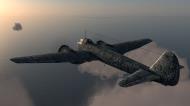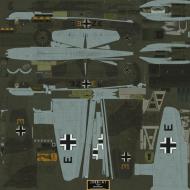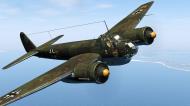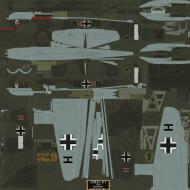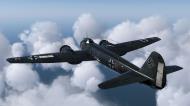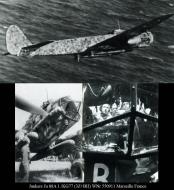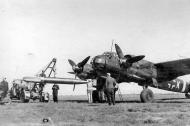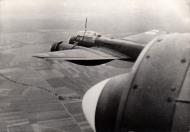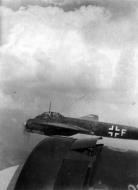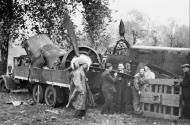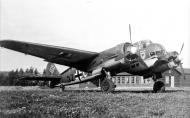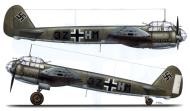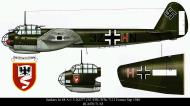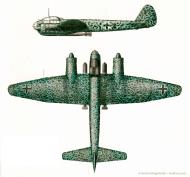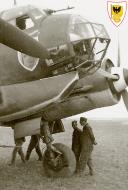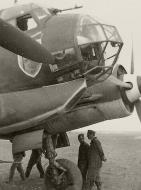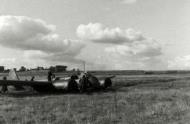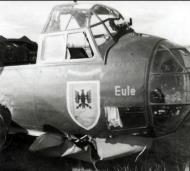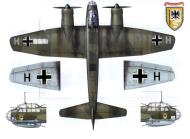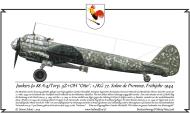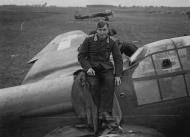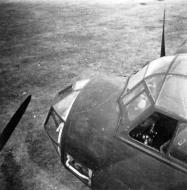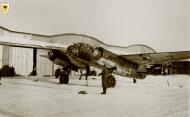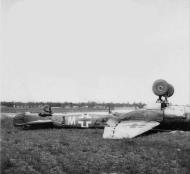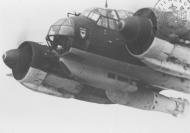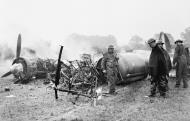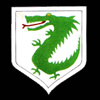 |
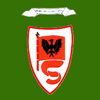 |
Stab I. Gruppe Kampfgeschwader 77 - I./KG77
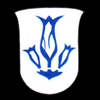 Stab II. Gruppe Kampfgeschwader 77 - Stab II./KG77
Stab II. Gruppe Kampfgeschwader 77 - Stab II./KG77
Photo 01: A standard early production model this Junkers Ju 88A-5 coded (3Z+DC) of the Gruppe Stab II./KG77 under camouflage netting in France. The Gruppe commanded by Major Behrendt, began to re-equip with the Junkers Ju 88 in July 1940 following the heavy losses suffered by its D0-17's. This aircraft's letter D is painted on the fuselage sides and beneath the wings in medium green RML25 with the last letter in black.
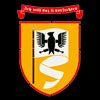 |
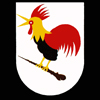 |
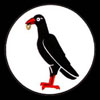 |
1. Staffel I. Gruppe Kampfgeschwader 77 - 1./KG77
Junkers Ju 88A4Torp 1./KG77 (3ZOH) crew Hirschfeld Belz Wunsche Schoder Orange Caritat France 1944 01
Profile Source: Flugzeug Classic 2009-04
Profile 0A: Junkers Ju 88A-14 of 1./KG77 coded 3Z+EH. This Ju 88 was probably an A-4 variant that was modified into an A-14 in a maintenance workshop. It retained the splinter pattern of RLM 70/71 on the uppersurfaces with RLM 65 underneath. The outboard bomb racks have been removed and the surface faired over. At that time it would appear that the paint shop carried out some non-standard modifications to the paint scheme by applying either RLM 70 or 71 in sprayed patches to parts of the underside including the tail area. Still noticeable are the dive brakes under the wings which partly over-lay the underwing Balkenkreuze. The unit code '3Z' and Staffel letter 'H' are in black and the individual letter 'E' is just visible as a very thin black outline painted on the white fuselage band. The emblem of I./KG77 has been painted on the nose.
Junkers Ju 88A 1./KG77 (3Z+EH) Sicily 1942 0B
Profile 0B: Junkers Ju 88A-4 of 1./KG77 with visible code 'EH'. The complete code of this aircraft should be 3Z+EH, but in common with many aircraft of this unit, the unit code has been painted out leaving just the Staffel letter 'H' and individual aircraft letter 'E' in black, with the latter being thinly outlined in white. These two letters were also applied on the flame damper of the Junkers Jumo 211 engine. The spinner appears to have been half-sprayed in the white Staffel colour without any masking being used leaving a horizontal soft demarcation line.
Junkers Ju 88A 1./KG77 (3Z+EH) Sicily 1942 01
Photo 01: A Ju 88A-14 coded (3Z+EH) of I./KG77 with nose-mounted MG FF 20 mm cannon operating from Sicily late in 1942 on anti shipping operations. The Lotfe bomb sight has been removed from the nose of the ventral gondola to provide space for the cannon.
Junkers Ju 88A 1./KG77 (3Z+EH) Sicily 1942 02
Photo 02: In contrast to the high quality paintwork shown on the earlier Ju 88A-4, this machine bas been the subject of some very hurried and haphazard repainting. The side anduppersurfaces a have been oversprayed with RLM 79 sand-yellow in the 'Arabesken' pattern over the original camouflage pattern of RLM 70/71. However. it appears that in order to stop the reflection of the white areas of the national markings during night operations or bright sunlight, these have been crudely oversprayed with black paint. In addition the whole underside of the aircraft also appears to have been sprayed with black paint with some areas not being completely covered, allowing some patches of RLM 65 to show through.
Emblem 1./KG77 01
Junkers Ju 88 A-4/Torp Kampfgeschwader 77 - 1./KG77 (3Z+OH) White O crew Hirschfeld, Belz, Wunsche and Schoder Orange-Caritat France 1944
Hi Matthew,
3Z+OH "Otto" Crew: Pilot Günther Hirschfeld, Navigator Eugen Belz, Radio-Operator Werner Schröder, Gunner Hermann Wuensche, 18 missions flown with 3Z+OH, total 21 missions from march 1st to August 1944, out of 44 crews only 3 survived!
Kind regards, Harald Belz
 I. Gruppe Kampfgeschwader 77 - 2./KG77
I. Gruppe Kampfgeschwader 77 - 2./KG77
Junkers Ju 88S I./KG77 (B) Russia 1943 01-02
Photo's 01-02: Two photo's showing the landing accident of a Junkers Ju 88S 1./KG77 (+B) Russia 1943. The colors marked on the photo are RML 75/76/74.
Junkers Ju 88A 2./KG77 (3Z+DK) Sicily 1942
Photo 01-02: The 'Battle of Graveney Marsh' took place on September 27th 1940. On September 26th 2010, a plaque was unveiled in a local pub near Graveney Marsh to commemorate what some call the last armed battle against an enemy that took place on British soil.
The Battle of Graveney Marsh took place against the background of the Battle of Britain. On September 27th, 1940, a Ju 88 crashed in marshland very near to Graveney Marsh near Whitstable in north Kent after being attacked by two Spitfire's from the RAF's Fighter Command. Men from 'A Company', 1st Battalion London Irish Rifles were billeted in the local pub, the 'Sportsman Inn' in Seasalter near Graveney Marsh. They went out to pick up the survivors and to place a guard around the wreckage so that souvenir hunters could be kept at bay.
Little did they expect that as they approached the downed aircraft the aircraft's four-man crew would fire on them. The crew used the Ju 88's two machine guns and their issued firearms to defend themselves.
The men from 'A' Company split in two with one immediately retuning fire while the other crawled via a dyke to within 50 metres of the Ju 88 and fired on the four-man crew. Facing fire from two sides, the crew surrendered after a 20 minutes fight as it was clear to them that they were up against greater firepower.
One of the aircrew was heard to say that the Ju 88 would 'go up at any moment' and this was taken to mean that an explosive charge had been placed on the aircraft to blow it up. The commander of 'A' Company ran back to the Ju 88, found an explosive charge under a wing, removed it and threw it into a ditch. Thus the aircraft was saved for British intelligence engineers to examine. Captain John Cantopher was awarded a George Medal for this act of bravery. What he would not have known was that the Ju 88 shot down was the newest version in the Luftwaffe's armoury and had been flying for only two weeks. Its capture was a major coup for the British.
The crew were marched under escort to the 'Sportsman Inn' and given some beer before being taken away to a Prisoner-of-War camp.
The incident was hushed up during the war as the British did not want the Germans to know that they had captured nearly intact one of their most modern bombers. Therefore, the newspapers of the time made no mention of the 'Battle of Graveney Marsh' and over the years it effectively faded out of peoples memory.
On September 26th 2010, a drumhead service was held attended by Major General Corran Purdon, MC, President of the London Irish Rifles Regimental Association before a plaque commemorating what occurred back in September 1940 was unveiled in the pub.
 II. Gruppe Kampfgeschwader 77 - 4./KG77
II. Gruppe Kampfgeschwader 77 - 4./KG77
Photo 01: Junkers Ju 88 A1 coded 3Z+HM (Blue H) of 4./KG 77, September 1940. The aircraft in standard finish of RLM 70/71/65. KG 77's emblem on either side of the fuselage. The individual aircraft letter H was blue, white-outlined, repeated in the same color on wing upper surfaces, and in black on wing lower surfaces, outboard of the crosses. Spinners most probably also in RLM 24 Dunkelblau (dark blue). Of special interest is the large, white rectangle painted on port side of the rudder, repeated on port wing, inboard of the cross. Kagero ISBN 978-83-61220-19-0
Photo 01: During the Battle of Britain many Luftwaffe bomber aircraft had white vertical bars painted on top of their wings and on their rudder to easily identify their Gruppe when operating in close formation. These Ju 88A-1s from I./KG77 carried a single such bar in each position.
Junkers Ju 88A 6./KG77 (3Z+GP) East Prussia 1941
Photo 01: When Barbarossa began on 22 June 1941 all Luftwaffe bombers carried the standard dark green uppersurface camouflage with pale blue undersides. This Junkers Ju 88A-4 thought to be from 6./KG76 and coded 3Z+GP was based at Jürgenfelde in East Prussia. It has the standard yellow fuselage band and wingtips associated with operations in the East and also has it's indentifying letter G painted in yellow. As can be seen in the photograph the Werk Nummer is painted in white above the swastika.
 III. Gruppe Kampfgeschwader 77 - III./KG77
III. Gruppe Kampfgeschwader 77 - III./KG77
Profile 00: This Junkers Ju 88A-5 coded (3Z+AR) of the 7./KG77 operated in the Eastern Front. This artist rendition profile is from one of Squadron/Signal books.
Junkers Ju 88A 8./KG77 (+DS) Italy 1943 00
Profile 00: Junkers Ju 88A4 of 8./KG 77 coded +DS The 'Arabesken' pattern of RLM 79 light sand-yellow had been meticulously applied with the machine having then been thoroughly cleaned and lightly polished afterwards. The unit code '3Z' had been overpainted, but the Staffel letter '5' was retained in black as was the individual aircraft letter '0' which was thinly outlined in red. The white Mediterranean Theatre band that was applied to the original RLM 72/73 scheme has also been retained but overpainted in RLM 79 light sand-yellow. The spinner tips may have been painted in the red Staffel colour.
Junkers Ju 88A 8./KG77 (+DS) Italy 1943 01
Photo 01: This Ju 88A-4 of 8JKG77 is just touching down after returning from a mission somewhere in Italy. This machine appears to be fairly new, as it has not suffered from the normal wear and tear often associated with aircraft in operational use. The engines have been fitted with flame-dampers, which were also painted to match the uppersurfaces.
Junkers Ju 88A 8./KG77 (+KS) Italy 1943 01
Photo 01: A group of six Ju 88A-4s of 8./KG77 flying over the Mediterranean, appear to be returning from a mission as no external bombs are visible. The aircraft codes are visible, the nearest being 'KS' with the next 'FS' and the third 'ES'. The application of this camouflage pattern was found to be most effective when flying over water.
Junkers Ju 88A 8./KG77 (+KS) Italy 1943
Profile 00: Junkers Ju 88A-4s of 8./KG77. It is not known for certain whether the RLM 79 pattern was applied over the splinter pattern of RLM 70/71, although it is likely. Each aircraft appears to have had the random snaking lines of RLM 79 light sand-yellow painted in various patterns, presumably at the whim of the painters, over the uppersurfaces. The German term for this kind of application was called 'Arabesken' (Arabesque). None of the aircraft carry the unit code of 3Z or the white Mediterranean Theatre band around the fuselage as they had been overpainted. The 5taffel letter '5' was painted in black, as was the individual aircraft letter 'K' which was thinly outlined in red, the Staffel colour. It is also possible that the spinner tips may have been painted in red.
Junkers Ju 88A 8./KG77 (+KS) Italy 1943 01
Photo 01: A group of six Ju 88A-4s of 8./KG77 flying over the Mediterranean, appear to be returning from a mission as no external bombs are visible. The aircraft codes are visible, the nearest being 'KS' with the next 'FS' and the third 'ES'. The application of this camouflage pattern was found to be most effective when flying over water.
Junkers Ju 88A 9./KG77 (3Z+KT) Mediterranean 1944
Profile 01: The Ju 88's of 9./KG77 (3Z+KT) were brought in from the Baltic to help replace the obsolescent He-111's of KG26 and used in anti shipping role.
Junkers Ju 88A 9./KG77 (3Z+KT) Mediterranean 1944 01
Photo 01: The Ju 88's of 9./KG77 (3Z+KT) were brought in from the Baltic to help replace the obsolescent He-111's of KG26 and used in anti shipping role. This photo shows one such example on patrol flying low over the Mediterranean.
Luftwaffe pilot Walter Nowotny 258 kills
Luftwaffe pilot Theodor Weissenberger 208 kills
Luftwaffe pilot Heinz Bar 175 kills
Luftwaffe pilot Franz Schall 133 kills
Luftwaffe pilot Rudolf Rademacher 126 kills
Luftwaffe pilot Adolf Galland 104 kills
Luftwaffe pilot Hermann Buchner 58 kills
Luftwaffe pilot Erich Hohagen 50 kills
Luftwaffe pilot Rudolf Sinner 39 kills
Luftwaffe pilot Ernst-Wilhelm Modrow 32 kills
Luftwaffe pilot Richard Altner 25 kills
Luftwaffe pilot Gunther Wegmann 21 kills
Luftwaffe pilot Wolfgang Schenck 18 kills
Luftwaffe pilot Franz Holzinger 10 kills
Luftwaffe pilot Helmut Lennartz 10 kills
Luftwaffe pilot Alfred 'Bubi' Schreiber 9 kills
Luftwaffe pilot Eduard Schallmoser 3 kills
Luftwaffe pilot Wilhelm Batel 1 kills
Luftwaffe pilot Joachim Fingerlos 1 kills
Bibliography: +
- 'Junkers Ju 88 - Star Of The Luftwaffe' by Manfred Griehl Published:Arms & Armour Press, Sept 1990 ISBN: 1 85409 043 7
- History and technical development of each variant. 'Junkers Ju 88' by Ron Mackay Published:The Crowood Press, Oct 2001 ISBN: 1 86126 431 3
- Comprehensive history of Ju 88.
- 'Junkers Ju 88 Over All Fronts' by Joachim Stein Published:Schiffer Publishing, 1991 ISBN: 0 88740 3123
- Pictorial history of the Ju 88.
- 'Junkers Ju 88 In Action Vol 2: Aircraft in Action No.113' by Brian Filley Published:Squadron/Signal Publications, July 1991 ISBN: 0 89747 258 6
Traces the development of the fighter versions. Very well illustrated.- 'The Junkers Ju 88 Night Fighters: Profile No.148' by Alfred Price Published:Profile Publications Ltd, 1967 ISBN: n/a
Concise well illustrated history of the Ju 88C/G variants.- 'German Night Fighter Aces Of World WAr-2: Osprey Aircraft Of The Aces - 20 by Jerry Scutts
Published:Osprey Publishing, 1998 ISBN: 1 85532 696 5
Covers the development, tactics and leading aces of the Luftwaffe night fighter force. Some factual errors.- 'Nachtjagd-The Night Fighter Versus Bomber War Over The Third Reich 1939-1945' by Theo Boiten
Published:The Crowood Press, June 1997 ISBN: 1 86126 086 5
* Traces the parallel development of RAF night bombing and Luftwaffe night fighting during WW2. Very well written.Magazine References: +
- Airfix Magazines (English) - http://www.airfix.com/
- Avions (French) - http://www.aerostories.org/~aerobiblio/rubrique10.html
- FlyPast (English) - http://www.flypast.com/
- Flugzeug Publikations GmbH (German) - http://vdmedien.com/flugzeug-publikations-gmbh-hersteller_verlag-vdm-heinz-nickel-33.html
- Flugzeug Classic (German) - http://www.flugzeugclassic.de/
- Klassiker (German) - http://shop.flugrevue.de/abo/klassiker-der-luftfahrt
- Le Fana de L'Aviation (French) - http://boutique.editions-lariviere.fr/site/abonnement-le-fana-de-l-aviation-626-4-6.html
- Le Fana de L'Aviation (French) - http://www.pdfmagazines.org/tags/Le+Fana+De+L+Aviation/
- Osprey (English) - http://www.ospreypublishing.com/
- Revi Magazines (Czech) - http://www.revi.cz/
Web References: +
- Wikipedia.org - https://en.wikipedia.org/wiki/Junkers_Ju_88
 Editor for Asisbiz: Matthew Laird Acred
Editor for Asisbiz: Matthew Laird Acred
If you love our website please donate so we can make this site even better !!

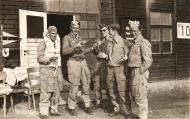
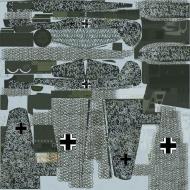




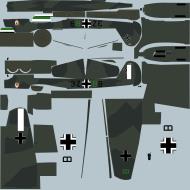

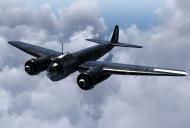
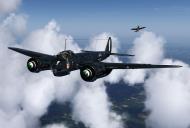
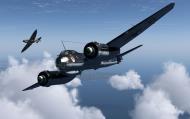
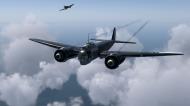
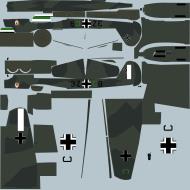


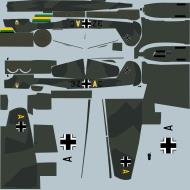
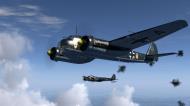

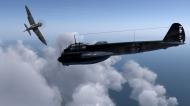

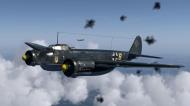
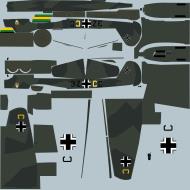


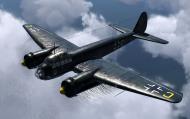
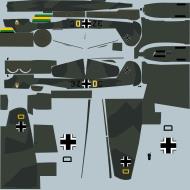


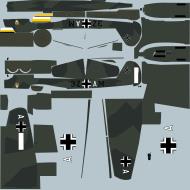

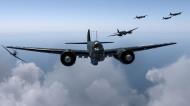

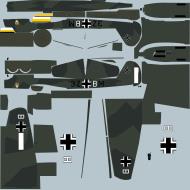
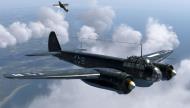



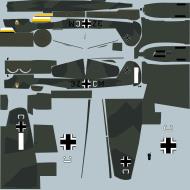

.jpg)


.jpg)
